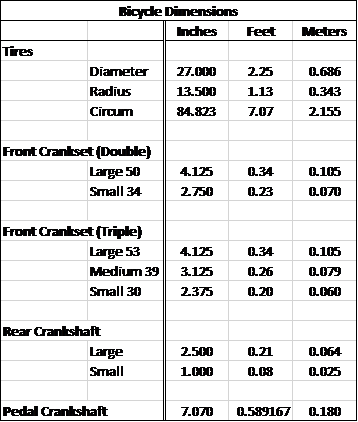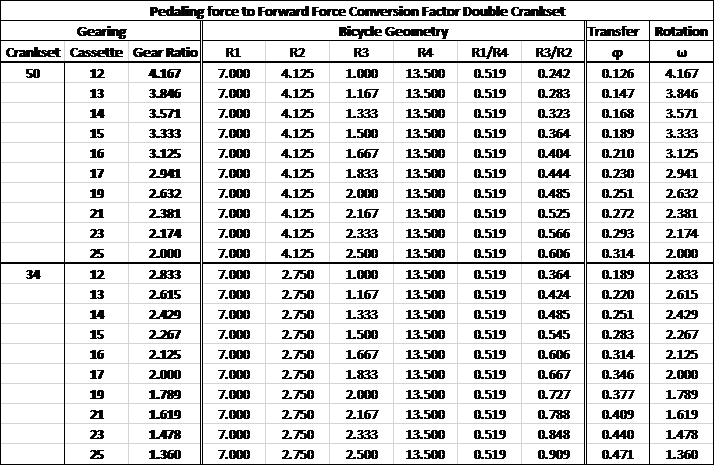Drivetrain Force Transfer Coefficient
In the last topic, we compute the equation for the force transfer, but mentioned it is dependent on the gearing. What we want to do next is to use this to see how gearing effects force transfer.
Rear Tire Force = Pedal Force * (R1 R3)//(R2 R4)
Rear Tire Force = φ * Pedal Force
Where φ = (R1 R3)//(R2 R4) = (R1/R4) * (R3//R2)
Standard Roadbike Dimensions
With all of the radii in the above, we need some standard dimensions to work with. The following provides the radii for both two and three front crankshaft configurations. To get the radii of the front chainwheels or rear cassettes, I took advantage othat the teeth must be evenly spaced evenly 0.5 inch intervals. Multiplying 0.5 by by the number of teeth yielded the circumference from which the radii can be computed. (You now know why I included the discussion about teeth size.)

Force Transfer and gearing
The table below provides the twenty force transfer coefficients associated with a compact configuration. The Rotation factor on the right is simply the Gear Ratio telling us how many times the rear wheel is turning.

Downshifting Within a Given Front Chainwheel
Once you have set your front chainwheel, we know as we downshift, we move slower but pedaling gets easier. Here downshifting means going to a lower Gear Ratio. Can we tell this from our table.
Assuming we are in the large front chainwheel, we see that fully downshifting increases force transfer by a factor of 2.49. At the same time, it decreases the rotation rate by a factor of 2.08 effectively cutting the speed in half.
Next Topic: Drivetrain Power Transfer
